Among the primary objectives of the CSHIHE are the enhancement of public appreciation of Ireland’s built heritage and landscapes through research and scholarly publication on various aspects of Ireland’s historic houses and estates. The CSHIHE supports undergraduate, postgraduate and postdoctoral research at Maynooth University. Since 2010, the CSHIHE has developed a number of significant research projects, with public outcomes, in collaboration with the OPW, the National Library of Ireland, Castle Howard in Yorkshire, and private benefactors.
Centre for the Study of Historic Irish Houses and Estates
OMARC
The OPW- Maynooth University Archive and Research Centre at Castletown was founded in 2008 when the Centre for the Study of Historic Irish Houses and Estates at Maynooth University (Director, Prof Terence Dooley) and the Office of Public Works came together in collaboration with Maynooth University Library to create a facility for the care and study of archives and other sources relating to the history of Irish country houses, landed estates and the decorative arts. The Archive and Research Centre is located on the second floor of Castletown House in Celbridge, Co. Kildare. It was officially launched on 13 November 2008 by President Mary McAleese.
Collections
To date, the following important Country House and Estate collections have been secured by the CSHIHE/ OPW.
- Airfield House
- Ballindoolin
- Clements of Rathkenny
- Dobbyn Estate
- Enniscoe House
- Knight of Glin furniture archive
- Purdon Coote
- John Holohan
Donations
We are continually seeking new additions to our growing collection of estate material. Any person wishing to donate original material for permanent preservation and research please contact Professor Terence Dooley, Director of the CSHIHE, at [email protected] or OPW- Maynooth University Archive and Research Centre at Castletown.
Publications
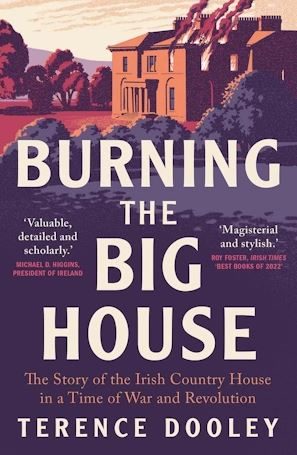
During the Irish Revolution nearly three hundred country houses were burned to the ground. These “Big Houses” were powerful symbols of conquest, plantation, and colonial oppression and were caught up in the struggle for independence and the conflict between the aristocracy and those demanding access to more land. Stripped of their most important artifacts, most of the houses were never rebuilt, and ruins such as Summerhill stood like ghostly figures for generations to come.
Terence Dooley offers a unique perspective on the Irish Revolution, exploring the struggles over land, the impact of the Great War, and why the country mansions of the landed class became such a symbolic target for republicans throughout the period. Dooley details the shockingly sudden acts of occupation and destruction—including soldiers using a Rembrandt as a dart board—and evokes the exhilaration felt by the revolutionaries at seizing these grand houses and visibly overturning the established order.
Published by Yale University Press, https://yalebooks.yale.edu/book/9780300270433/burning-the-big-house/
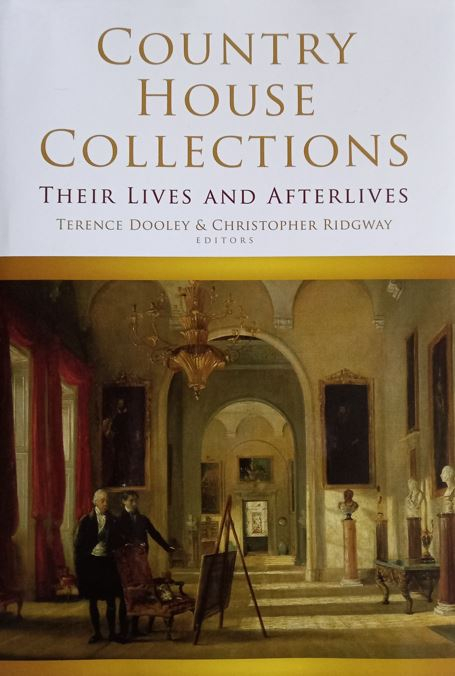
Country houses have been defined by their contents as much as by their architecture, landscapes and the families who occupied them. They have boasted assemblies ranging from antiquities, paintings, decorative arts, books and manuscripts, to antiquarian, ethnographic and scientific collections. Outdoors their gardens were often adorned with collections of other sorts, monuments, sculpture and horticultural specimens. Rarely have such collections survived intact – sales, destruction, fire and theft have been repeated occurrences. Country house collecting has been about dispersal as well as acquisition.
The essays in this volume look at a range of country house collections in Ireland, the United Kingdom, the United States and Continental Europe. They consider how and why collections were amassed and examine their break-ups, and the reasons for such dispersals, whether elective or enforced; they question how the identity of a house changes if its contents have been removed; they consider the afterlives of objects as they moved into the art market, the museum world or elsewhere; and they deliberate on what happens to a collection once it has begun to be dismembered, and how objects are viewed and understood in new locations by different audiences.
Among the other topics considered are the impact of exhibitions, auctions and tax systems, private versus institutional collectors, the range of audiences who appreciate art and how collections are made to tell national stories.
Published by Four Courts Press https://www.fourcourtspress.ie/books/new-year-folder/country-house-collections/
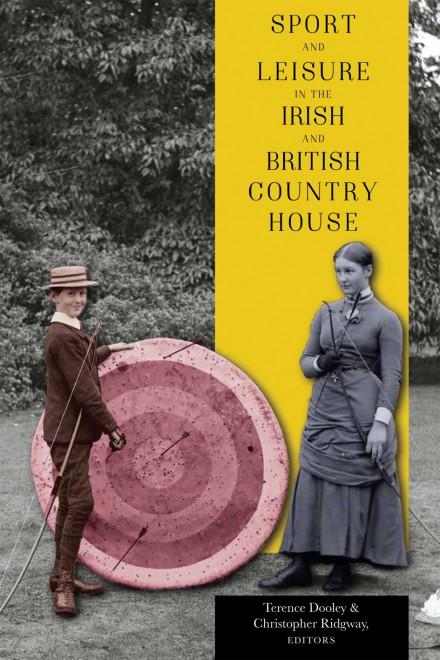
Terence Dooley and Christopher Ridgway, Sport and leisure in the Irish and British country house
Sir Shane Leslie once wrote that ‘Country life was entirely organized to give nobility and gentry and demi-gentry a good time.’
Throughout Ireland and Britain the country house was a centre of hospitality, entertainment and leisure, with the hosting of house parties, soirées and balls. Pastimes included photography, painting, astronomy and taxidermy. Outdoors the parkland was used for a variety of sporting activities including archery, cricket, croquet and shooting, as well as local sports events, and beyond the demesne activities included hunting, horse racing and yachting.
This volume provides fresh and original insights into how leisure and sport underpinned the social hierarchy of country houses and their local communities in Ireland and Britain in the nineteenth and twentieth centuries.
Reviews
' [...] very interesting insights into this world of the "country house" and "seats" of the nobility ... This is a very commendable approach which should encourage further studies', Ireland's Genealogical Gazette
Published by Four Courts Press, https://www.fourcourtspress.ie/books/2019/sport-and-leisure-in-the-irish-and-british-country-house/
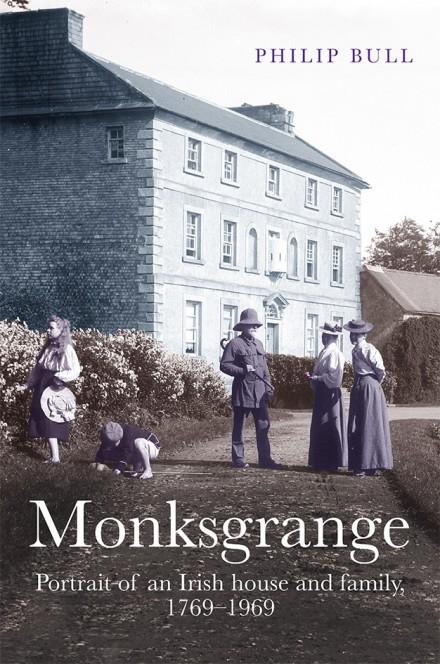
Philip Bull, Monksgrange: Portrait of an Irish house and family, 1769–1969
A County Wexford Ascendancy house saved twice by rebel intervention, in 1798 and 1922, Monksgrange tells a compelling story of Irish history from the eighteenth to twentieth centuries. Its people were not ordinary. One landlord had fought against slavery in the American Civil War, another was a novelist and another was an agricultural reformer and senator in the independent Irish state. The eminent historian of medieval Ireland G.H. Orpen lived at Monksgrange, and a beautiful garden was created in the Arts and Crafts style. The furniture for Dublin’s Country Shop was made there, and a carp pool built by the Cistercians in the thirteenth century still attests to the property’s much earlier history. This book illuminates important aspects of Irish history and chronicles how this talented and unconventional family experienced and survived the many vicissitudes of Irish life over two centuries. A postscript shows how the house continues to play a positive role in contemporary Irish life.
Published by Four Courts Press, https://www.fourcourtspress.ie/books/2019/monksgrange/
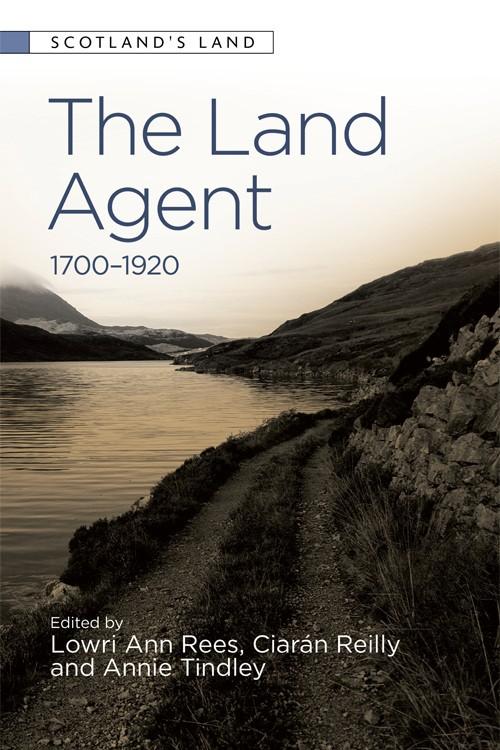
Lowri Ann Rees, Ciarán Reilly, Annie Tindley, Scotland's Land: The Land Agent, 1700-1920
'This book brings together leading researchers of British and Irish rural history to consider the role of the land agent, or estate manager, in the modern period. Land agents were an influential and powerful cadre of men, who managed both the day-to-day running and the overall policy direction of landed estates. As such, they occupy a controversial place in academic historiography as well as popular memory in rural Britain and Ireland. Reviled in social history narratives and fictional accounts, the land agent was one of the most powerful tools in the armoury of the British and Irish landed classes and their territorial, political and social dominance. By unpacking the nature and processes of their power, The Land Agent explores who these men were and what was the wider significance of their roles, thus uncovering a neglected history of British rural society.'
Published by Edinburgh University Press, https://edinburghuniversitypress.com/book-the-land-agent.html
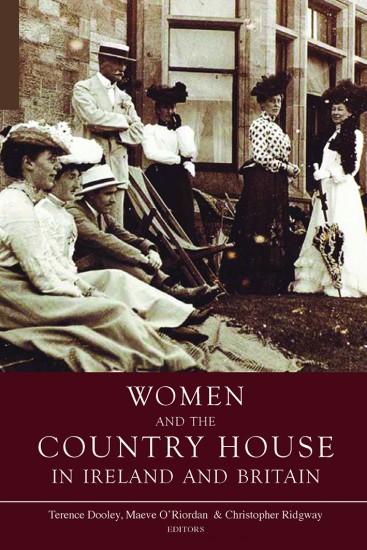
Terence Dooley, Maeve O'Riordan and Christopher Ridgway, Women and the Country House in Ireland and Britain
This volume of essays examines the lives of women in country houses in Ireland and Britain from the seventeenth century to the twentieth century. The authors present a spectrum of female house owners, residents and caretakers who were far more than bit players in the histories of families and big houses.
The women featuring in these essays were all agents in their own destinies, taking charge of their lives (as much as was possible within a repressive society), as well as influencing the lives of others. They were committed to organizing households, supervising architects and builders, raising families, mobilizing political support, acquiring culinary expertise, assisting husbands or sons, writing fiction, travelling overseas, and, in one instance, undoing a late husband’s work.
Drawing from a wide range of archival sources and family papers, this collection goes some way towards answering the question: ‘what did they do?’, and demonstrates the many roles women played in the appearance and running of family estates.
Published by Four Courts Press, https://www.fourcourtspress.ie/books/2018/women-and-the-country-house-in-ireland-and-britain/
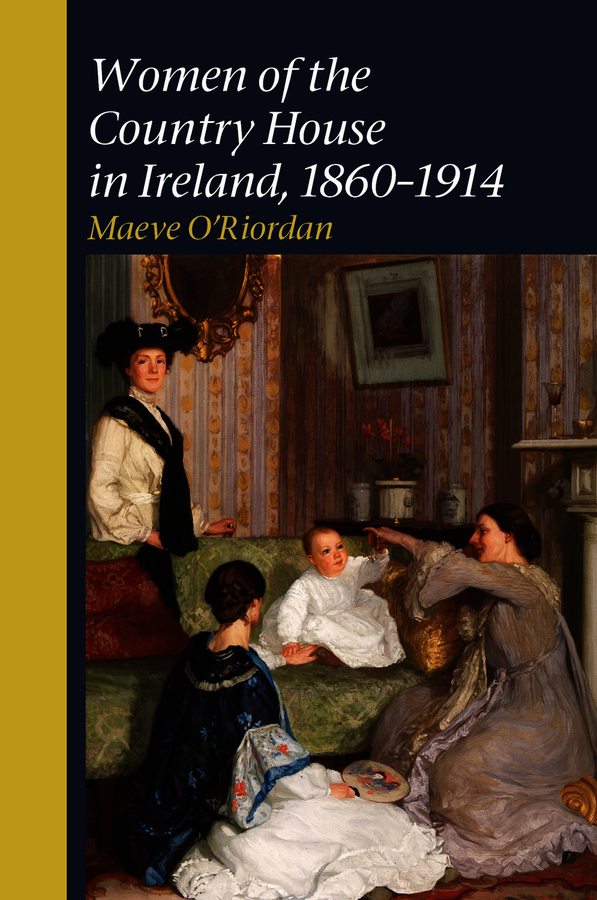
Maeve O' Riordan, Women of the Country House in Ireland, 1860-1914
'Maeve O’Riordan opens the doors of the country house (or the big house as it is often referred to) in Ireland to reveal the lives of women among the Irish ascendancy. Drawing on personal records from twelve different families, the reader is provided with unprecedented insights into the female experience among the privileged landed class at a time of social upheaval in Ireland. Space is given to these women’s voices as they navigated the limited roles available to women at the time. Unmarried women are not excluded and their efforts at forging careers and identities outside the home are also uncovered. Though their names are now forgotten, women like Mabel O’Brien – who was depicted as wife, mother and society woman in her husband Dermod’s painting The Jewel (pictured on the front) – contributed to the public success of their families through their dutiful, private roles. Their marriages forged important social links and their commitment to home duties ensured that the family residence was a centre of prestige. Women of the Country House in Ireland will appeal to anyone interested in the history of women or the ascendancy. It invites you to step into the country houses of Ireland and, for the first time, to get to know the women who lived within their grand drawing rooms before the onset of the First World War and the Irish War of Independence.'
Reviews
O’Riordan’s insightful analysis is a real pleasure to read and no mean feat in a challenging archival context. Women of the country house in Ireland more than achieves its goal of bringing women’s contributions into the foreground of our histories of elite life in late nineteenth- and early twentieth-century Ireland and opens the door for future explorations of gender and power in this stratum of Irish society.’
-Leonie Hannah, Irish Historical Studies
Published by Liverpool University Press, https://www.liverpooluniversitypress.co.uk/books/id/41738/
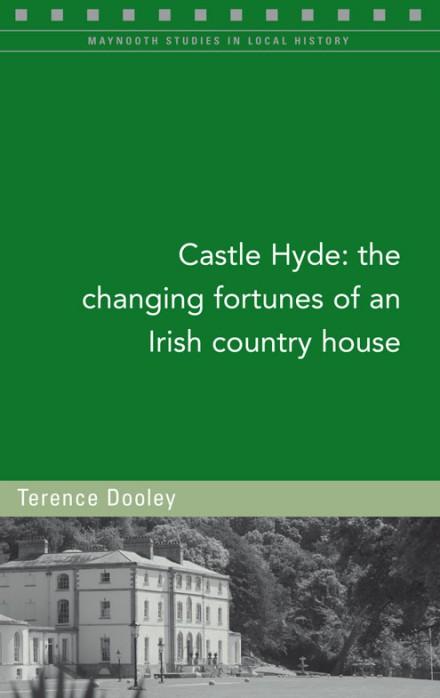
Terence Dooley, Castle Hyde: The changing fortunes of an Irish country house
Castle Hyde is one of the most important surviving country houses in the south of Ireland. This book details its rise as a country residence during the heyday of the Irish landed class, when great architectural piles symbolized wealth, social standing and political power. It examines the fatal consequences that the Great Famine had on the Hyde family, forcing them to sell the mansion and estate, a sale that was characterized by skulduggery and intrigue. Post independence, when hundreds of similar mansions were disappearing from the Irish landscape, Castle Hyde was purchased by an American publishing tycoon, Henry Laughlin, who turned it into a social hub where American authors, academics, statesmen, entertainers, and even the Boston Symphonic Orchestra gathered in the decades from the 1920s to the 1980s. Following the death of Laughlin and the sale of the house, Castle Hyde fell into near ruin. However, it was purchased in 1999 by Irish-American entertainer, Michael Flatley, whose investment in its restoration and regeneration has provided it with a life line it might not have had.
Published by Four Courts Press, https://www.fourcourtspress.ie/books/2017/castle-hyde/
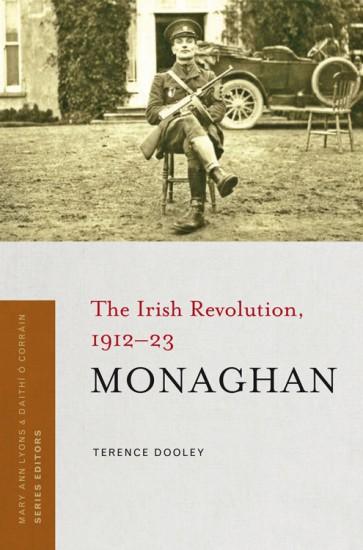
Terence Dooley, The Irish Revolution: Monaghan 1912-1923
By 1912, a revolution had already taken place in Monaghan, a bloodless revolution that had resulted in the overthrow of one ruling elite to be replaced by another. What began in 1912 with the signing of the Ulster Solemn League and Covenant, followed the next year by the founding of the Ulster Volunteer Force, might be considered from the Protestant perspective as an attempted counter-revolution. It was at the very least a determined effort to remain part of the British Empire, which for most Monaghan Protestants was their spiritual and ancestral home. Constitutional nationalists were not prepared to give up the gains they had made. Separatist nationalists wanted more and so for them the 1916 Rising represented the beginning of unfinished business. In this political maelstrom there were agrarian agitators who sought the final solution to the land question; 2,500 young men who went to war, one-fifth of whom never returned and the others to a very changed country; and paramilitaries who divided along sectarian lines providing an extra dimension to events of the period. Thus, between 1912 and 1923, Monaghan politics and society were transformed for a second time, not least of all by the imposition of the border with all the attendant social and economic problems partition brought. Because of Monaghan’s socio-religious demographic and its borderlands location, this book offers an intriguing insight to how the period 1912–23 played itself out at local level.
Published by Four Courts Press, https://www.fourcourtspress.ie/books/2017/monaghan/
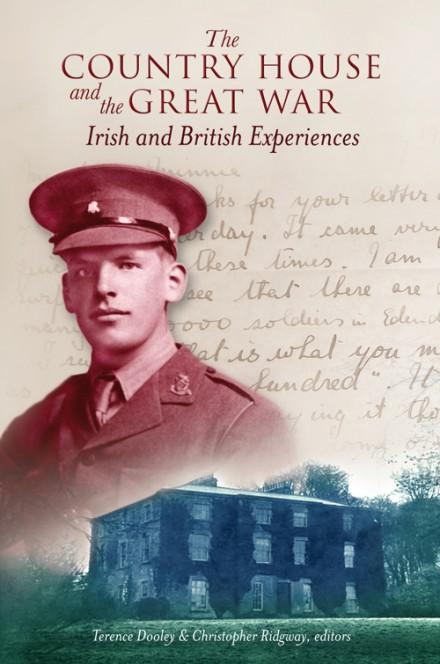
Terence Dooley and Christopher Ridgway, The country house and the Great War: Irish and British experiences
Drawing on archival materials, and incorporating never-before-seen images, this volume presents a spectrum of experience: from owners, to servants and tenants, as well as the local communities that lived in the shadows of the country houses. These personal narratives identify lost or forgotten figures, uncover unknown stories and military records and excavate the more hidden histories of those who endured the war at home. They are a powerful reminder of the experiences common to many during the 1914–18 period, as well as a record of how individual lives were shaped by personalities and unique circumstances.
Reviews
‘This volume is a useful contribution to the exploration and assessment of the impact of the First World War in the context of the country house. It is a testament to the potential afforded by archival sources, which enable researchers to give voice to a multitude of experiences’, Lorraine Bourke, Irish Arts Review (Spring 2017).
‘Explores the little known world behind the gates of the “Big House” … [an] excellent collection of essays’, Michael Merrigan, Ireland's Genealogical Gazette (February 2017).
'The stories in this volume are aimed at the general reader, but have plenty of details and colour to satisfy the specialist too, and are illustrated with a remarkable range of largely unknown images.' - Familia, Ulster Genealogical Review, ( 2017)
'The country house and the Great War makes a useful contribution to the ongoing reclamation of Ireland's Gerat War history ... This presents a nuanced look at the impact of the war on the upper classes ... In Ireland, national amnesia about the Great War kept stories like these confined to their estates. The country house and the Great War reclaims these rich and varied experiences, revealing valuable insight and context about the service of upper-class Anglo-Irish soldiers and the ways in which their families dealt with their service and sacrifices. Individuals interested in the decline of the Anglo-Irish ascendancy, the relationship between class and military service in Ireland, or the relationship between class and the period of war and revolution should find value in the essays in this volume.', Jason R. Myers, Irish Historical Studies, (May 2019).
Published by Four Courts Press, https://www.fourcourtspress.ie/books/2016/the-country-house-and-the-great-war/
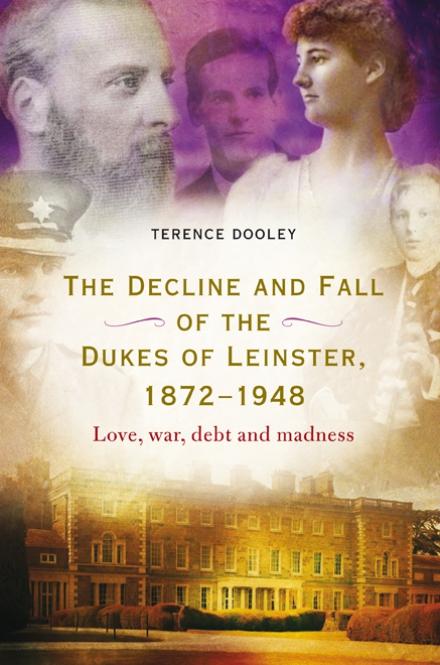
‘A fascinating saga, recounted with verve in this book', Diarmaid Ferriter, Irish Times (June 2014).
‘I cannot express how much I loved the story … chapter three is called “The marriage of Gerald and Lady Hermione Duncombe, 1884” and the facts that surround this marriage, and the subsequent decline of Carton house and its residents, are where I got sucked in and could not put the book down! … All through the book we are told of royal connections, details of wedding presents for the newly married couple, parties held in honour of coming of age birthdays, trips abroad to find suitable wives, lavish expenditure and the high life that eventually caught up with the FitzGeralds. We also get to see how much money was spent all through these years … Personal letters are dotted through the main story … It is astonishing how one family went through so much tragedy and heartbreak … if you enjoy historical fiction, stories of The Big House or the likes of Downton Abbey, this book will knock your socks off … this book is of very high quality and contains many beautiful photos spanning the whole story. A beautiful edition which is sure to become a collectors edition’, Margaret Madden, Bleach House Library (May 2014).
‘In his latest work Terence Dooley gets up close and personal with the lives, loves and troubles of Ireland’s premier aristocratic family, the FitzGeralds, dukes of Leinster, during the tumultuous period from the 1870s onwards … Dooley draws on a rich seam of primary source material in order to provide an intimate and revealing portrait of several key family members over several generations … this is a compelling narrative which combines empathy with close attention to detail … This book is elegantly written; it manages to achieve a balance between compelling biography and more serious historical analysis. While covering familiar ground in terms of the political challenge to landlordism represented by the Land League and Home Rule and the economic impact of land reform and the breakup of landed estates, the original contribution of this book lies in the close examination of the impact these developments had on one particular family and estate, combined with an insight into the more personal problems faced by various generations of this family over this period. Key family events such as comings-of-age are used effectively as points at which to pause and explore the broader political, social and economic landscape of the world that existed outside the demesne walls of Carton … it is a compelling tale, well-told’, Olwen Purdue, Irish Literary Supplement (Fall 2015).
‘In Ireland, fascination with big houses and their former owners amounts almost to an obsession. Nowhere is this clearer than with the perennial interest in the FitzGeralds, successively earls of Kildare and dukes of Leinster … Professor Dooley shows how though residence and shrewd paternalism they tended an enviable inheritance of fertile lands. But genetic chance, as well as political and economic developments, weakened and eventually ruined the dynasty … Dooley makes excellent use of the duchess’ letters to Lady de Vesci and of the Scottish hospital records relating to Duke Maurice ... he avoids the jaunty knowingness or sententiousness with which the Rutlands and Fitzwilliams (and indeed sometimes the FitzGeralds) have been treated', Toby Barnard, Irish Arts Review (Autumn 2014).
‘Terence Dooley has through research, official reports and persuasive lobbying, shifted the cultural landscape on how Ireland regards its aristocratic past … [this] is a rattling good yarn … This is an excellent book about much more than a single Irish aristocratic family’, Allen Warren, Family & Community History (April 2015).
‘Dooley entertainingly recounts many of the FitzGeralds’ foibles, fortunes, failings and the fact that they family had several true eccentrics, twisted and tormented in part by the dictates of their positions … Descriptions of their weddings, balls, clothing and gift-giving practices build a sort of Who’s Who of the place and times … Dooley’s rendering of this ancient family’s fall from power and grace is replete with mighty struggles, legendary heroes and horrendous personal fiascos, bearing witness to the ancient Latin warning: “sic transit gloria mundi”’, Mary McWay Seaman, Celtic Connection (November 2014).
‘A real gem for the genealogist, local historian or, maybe, the budding screenwriter … The story, many times reading like a great novel, moves from Maynooth to rural Co. Kildare to high society London and onwards to continental Europe and America before returning to Carton House. Dooley opens up a much romanticised world and, in doing so, he exposes its many contradictions and charts the reasons for the decline and fall of so many Irish and British aristocratic dynasties … An excellent and most enjoyable read’, Michael Merrigan, Ireland’s Genealogical Gazette (May 2014).
‘In perhaps a lesson for us all, [the book] finds that in a 70-year period, the Dukes of Leinster fell from being Ireland’s premier aristocratic family, close friends of the British monarchy, to relative obscurity in an independent Irish Free State … at the book launch in Carton House on 5 June, Conor Mallaghan said: “This book has everything. If it was fiction one might question the story line. A television series jumps from these pages'', Henry Bauress, Leinster Leader (June 2014).
‘Generally, though not specifically, the historiography of the landed gentry in nineteenth century Ireland has placed landed elites in the context of their relationship with the peasantry or as the antithesis of nationalist Ireland … the personal account of successive Dukes of Leinster relayed by Dooley allows this work to transcend these old narratives and provides the reader with an enlightening portrait of aristocratic life in the British Isles during the nineteenth and twentieth centuries … The standard of research and use of archival material is of the high standards associated with Dooley’s previous works on the landed estates of Ireland’, Robert Hartigan, Liverpool Postgraduate Journal of Irish Studies (February 2016).
Published by Four Courts Press, https://www.fourcourtspress.ie/books/2014/the-dukes-of-leinster/
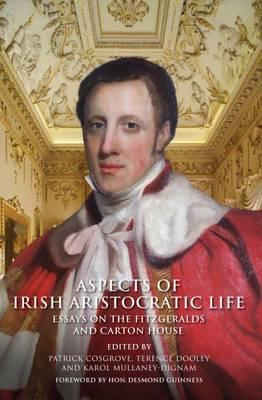
Patrick Cosgrove, Terence Dooley and Karol Mullaney Dignam, Aspects of Irish Aristocratic Life: Essays on the Fitzgeralds and Carton House
'For almost 800 years, from their arrival with the first wave of Anglo-Normans in 1169, the FitzGeralds - Earls of Kildare and, from 1766, Dukes of Leinster - were the pre-eminent noble family living in Ireland, dominating the social, political, economic and cultural landscapes. This collection of essays, by established and emerging scholars, draws together some of the most recent and specialised research on the family, providing original perspectives on various aspects of their aristocratic history. Individual contributions inform on how the family first settled in Kildare and rose to ascendancy and how they maintained political status through court connections in England and beyond. Thematically, the essays cover such topics as the architecture and material culture of the Big House, the creation of the great eighteenth-century aristocratic demesne and landscape at Carton, the final break-up of the family's estates and its subsequent economic decline in the twentieth century.They examine the contributions made by individual members of the family to the social and cultural spheres in Ireland and further afield; their interest in local as well as international concerns; their enthusiasm for the arts, music and dancing; the relationship between employers and servants, dukes and the Catholic Church, younger sons and radicalism, the latter exemplified in the life of one of the more famous members of the family, Lord Edward FitzGerald, a leader of the Society of United Irishmen and the 1798 Rebellion.'
Published by UCD Press, https://www.ucdpress.ie/display.asp?isbn=9781906359713&
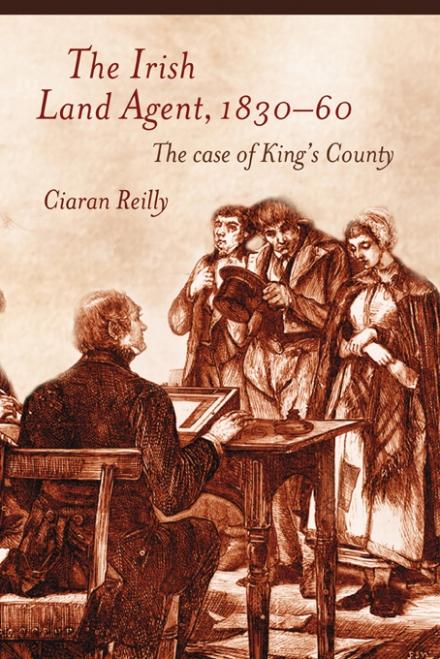
Ciarán Reilly, The Irish Land Agent, 1830-1860
Land agents have been stereotypically represented in Irish history as alien, capricious and in general the tormentors of the tenantry. However, to date, no definitive examination exists of the social background, education and training of land agents as a group. With the exception of a mere handful of men, such as William Steuart Trench, Charles Boycott and Samuel Hussey, land agents remain both a taboo and unknown within Irish historiography. But how accurate are such representations? How qualified or equipped were agents to deal with the challenges that the mid-19th century, and the Famine in particular, brought? Having identified over 100 men who acted as land agents during the period 1830 to 1860, this study examines the role and function of the agency during a time when their skills and qualifications were truly tested.
Reviews
'With the possible exception of Oliver Cromwell, no more hated figure stalks Irish history and folklore than the land agent. Ciarán Reilly’s study of land agents in King’s County (modern Offaly) addresses this and is a fascinating read ... Reilly's book is an academic study but it is very readable and easily accessible to the general reader. It is well organised, the scholarship is lightly worn and the writing is clear and well presented. The book says something new and important, and Reilly has a good eye for a telling quotation or a revealing statistic ... the main strength of Reilly's book is that it deals not in stereotypes but in hard reality', John Kirkaldy, Books Ireland (January/February 2015).
‘Ciarán Reilly presents a detailed analysis of the role of the much maligned and stereotyped Land Agent in his home county of Offaly during the turbulent middle years of the nineteenth century … This detailed study may be of most interest to students of the Irish land question and to the history of County Offaly. It is well researched with very detailed appendices and bibliography. Its conclusions certainly challenge the historical stereotype of the mid-nineteenth-century land-agent’, John Leogue, The Furrow (January 2015).
See Publisher's website: http://www.fourcourtspress.ie/books/2014/the-irish-land-agent/
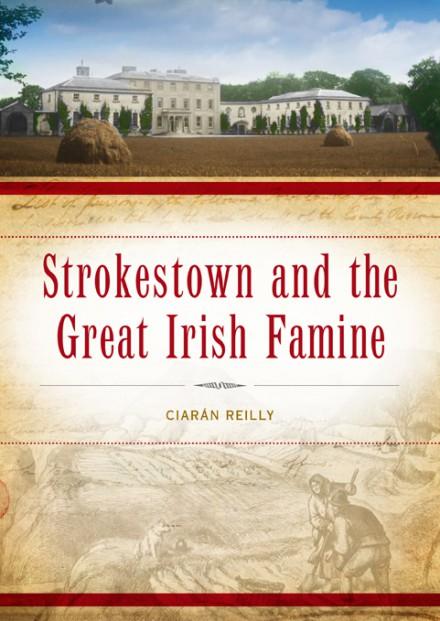
Ciarán Reilly, Strokestown and the Great Irish Famine
‘The most in-depth study of the effects of the Famine on a landed estate and its community … With the help of this book, we are brought deep inside the actuality of life during the Famine era. Some of our preconceived ideas of what actually transpired during that appalling era are challenged. Highlighted too is the important role played by the Irish National Famine Museum at Strokestown’, from the foreword by Mary McAleese, former President of Ireland.
The Strokestown Park House archive is one of the largest Irish estate collections in existence, with more than 50,000 documents comprising rentals, leases, accounts, correspondence, maps, drawings, architectural plans and photographs. Of particular importance are the papers that relate to the Great Irish Famine. This book aims to introduce the reader to the archive and to provide a fascinating and detailed insight into the many and varied experiences of the Famine for those who inhabited the estate in the 1840s.
‘The value of any historical account arises not only from its veracity, detail and clear delivery, but also from its engaging presentation; this book delivers it all! … Ciarán Reilly provides astounding insights into the lives of landless labourers and their families just before and during the horrific Great Famine. Of particular note is the volume of old photos, illustrations, documents and drawings that grace many pages … Reilly includes copies of documents that tell their own stories, and personality profiles reveal much more than mere data; individuals’ motives, grudges and goals prove fascinating’, Mary McWay Seaman, Celtic Connection (June 2015).
‘An insight into the varied experiences of famine gleaned from the records of those who inhabited the Strokestown estate in the 1840s’, J. Anthony Gaughan, The Irish Catholic (January 2015).
‘Reilly’s presentation is multi-layered and rich. A reader must take time with each page and each image …The book is a handsome one and it is loaded with dozens of images of Mahon documents that are large enough to read if you can make out the old-fashioned handwriting. The number and variety of images in itself is a tribute to the author and the publisher’, Mary Lee Dunn, The Bonfire: Newsletter of the Ballykilcline Society (Spring 2015).
‘Reilly’s book shines in two respects; its exploration of various experiences on the ground during the Famine, and its clear presentation of the topic’s basic facts … Reilly balances background information and primary material in a clear, logical format. Almost every page is dominated by a large illustration or document which adds colour or context to the Strokestown case study. Single-page addendums provide essential contextual information to unfamiliar readers’, Daniel Panneton, Liverpool Postgraduate Journal of Irish Studies (February 2016).
‘Strokestown in Roscommon is the home of the National Famine Museum, located in Strokestown Park House. The house also comes with an exceptionally rich archive of over 50,000 items belonging to the Mahon family, the former occupants … Reilly’s book describes itself as an introduction to the archive but it also serves as a very impressive microhistory that covers a great deal. It should be said that Four Courts Press have done a very impressive job of producing this beautiful and copiously illustrated study’, History Ireland (March/April 2015).
‘Reilly uses estate documents in the Strokestown Park House Archive to illuminate the lives of both the wealthy and the poor during the Great Irish Famine of the 1840s. He discusses various related subjects such as Strokestown on the eve of the Famine, early relief efforts 1846–47, changing attitudes on the Mahon estate, assisted emigration in practice, the murder of Major Mahon, post-famine Strokestown, and social memory and culpability’, Ringgold (March 2015).
Published by Four Courts Press, https://www.fourcourtspress.ie/books/2014/strokestown-and-the-great-irish-famine/
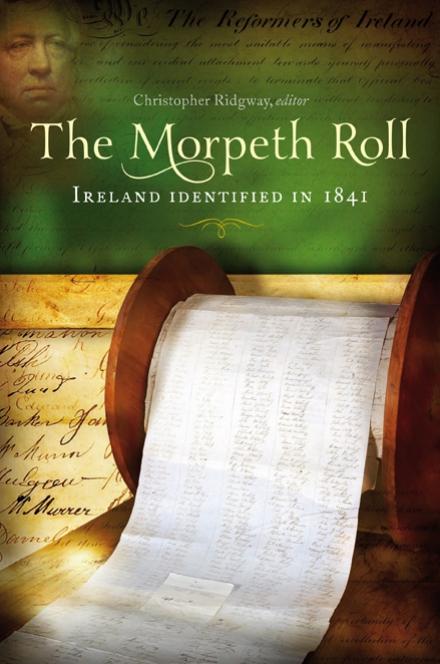
Christopher Ridgway, The Morpeth Roll: Ireland identified in 1841
In 1841, on stepping down as chief secretary, George Howard, Lord Morpeth, received a grand farewell testimonial from the people of Ireland. This took the form of over 160,000 signatures on sheets of paper wrapped around a gigantic bobbin; when unwound, the testimonial measures a staggering 420 metres. After decades of lying in obscurity in Castle Howard, North Yorkshire, the Morpeth Roll has been the subject of intense research, digitization and conservation. It is now being seen in public for the first time in 170 years as part of a touring exhibition throughout Ireland. The project is a unique and exciting collaboration between Castle Howard, NUI Maynooth and Ancestry.com.
This lavishly illustrated book of essays discusses the significance of the roll, and examines what it can tell us about pre-Famine Ireland. Just how the roll was commissioned and assembled in a matter of weeks, with signatures collected from across Ireland, is one focus of enquiry; as are the reasons for Morpeth’s extraordinary popularity, which endured when he returned to Dublin as viceroy in the 1850s. The roll is not only a document of national significance, it is also a unique mechanical object, presenting very special challenges for display and interpretation.
Reviews
‘A lavishly illustrated book of essays explaining what the roll is, what its background was, and why it is significant. The book is a bargain at the price, not least owing to the wealth of illustrations', History Ireland (September 2013).
'Document[s] the signatures of almost 160,000 people prominent in Irish politics and society … By looking at signatures on the rolls of such luminaries as O’Connell, Frederick Fitzgerald – 3rd Duke of Leinster, Charles Bianconi – public transport pioneer, and patriots Charles Gavan Duffy and Thomas Davis, one gets a spine-tingling moment of witnessing a personal mark made 170 years ago ... [this book gives] an appealing overview of the Morpeth Roll which includes a generous array of colour illustrations and political cartoons from the time when the Roll was created. The books serves as an excellent introduction to the local history discovery of the decade', Liam Kenny, Leinster Leader (May 2013).
‘Christopher Ridgway’s book is an illuminating collection of essays that look at the political background to the creation of the Morpeth Roll and the life and times of George Howard … The essays address not only the historical and political context of the testimonial, but the challenges faced by conservators as they unrolled the staggering 420 metres of signatures, to prepare them for digitisation and display. This is a beautiful publication, filled with illustrations, which spills over with Ridgway’s excitement as he brings this fascinating source into the public domain, 170 years after it was created', Nicola Morris, Who do you think you are? (July 2013).
‘There are few things more exciting to historians than the discovery of a long-lost treasure! These essays by esteemed experts examine the newly-found Morpeth Roll, an 1841 data-mining treasure, at Castle Howards, North Yorkshire, England … the Morpeth Roll presents “an opportunity to re-imagine Ireland through the simplest and most fundamental of signifiers – the signature”. There is little doubt that it will soon clarify many of that tumultuous era’s enigmas', Mary McWay Seaman, Celtic Connection (January 2014).
‘The recovery of the Morpeth Testimonial Roll in the archives of Castle Howard in Yorkshire has excited great interest. It contains some 160,000 signatures, including that of Daniel O’Connell, the ‘Liberator’ himself, and his sons … it is a fascinating story', Peter Costello, The Irish Catholic (2013).
‘The Morpeth Roll’s relevance to historians is not its size but what it tells us about pre-Famine Ireland … The account of [Morpeth’s] career is profusely illustrated by photographs from the Castle Howard collection, including a series of cartoons lampooning Morpeth’s friendship with Daniel O’Connell, a photograph of the vice-regal lodge cricket team (Morpeth was a great fan), family portraits, and a vice-regal group painted in 1856–7, mysteriously over-painted in the 1870s to remove eight individuals “in a way we normally associate with Stalin’s actions towards his Bolshevik colleagues”’, L.A. Clarkson, Familia: Ulster Genealogical Review (2013).
Published by Four Courts Press, https://www.fourcourtspress.ie/books/2013/the-morpeth-roll/
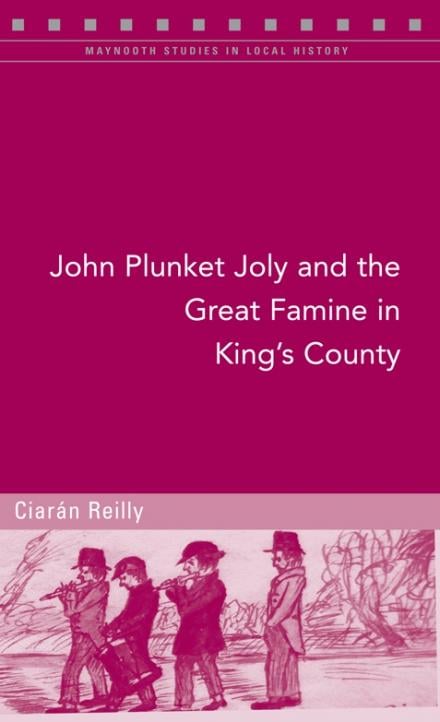
Ciarán Reilly, John Plunket Joly and the Great Famine in King's County
While a plethora of works have been published about the Great Famine, particularly during the sesquicentenary commemoration in the mid-1990s, few have examined areas that were not as adversely affected by the calamity. Most Famine studies (if not all) highlight poverty, distress, disease, death, eviction and emigration. This study examines the social world of John Plunket Joly (1826–58) and his family during the Great Famine in King’s County (Offaly). For the Joly family it seems life was undisturbed by the Famine and their daily activities of music, dancing and other activities remained features throughout the period. Their lifestyle, as recorded in the diaries of John Plunket Joly, is one of the few first-hand accounts from people who actually lived through the Famine. The world of the Jolys, a gentry family, contrasts greatly with the plight of the inhabitants of the parish of Clonsast in King’s County in which they lived.
Reviews
‘Joly lived from 1826 to 1858 and his diary provided Reilly with the chance to examine at first hand the society of an Anglo-Irish landlord at this time. It makes for surprising reading to come across accounts of soirées, dancing and similar entertainments in the midst of a catastrophe. However this is not a rosy-eyed view of the landlord class as Reilly contrasts the life of the Joly family with that of their tenants and others who were hard hit by the famine', Books Ireland (October 2012).
Published by Four Courts Press, https://www.fourcourtspress.ie/books/2012/john-plunket-joly/
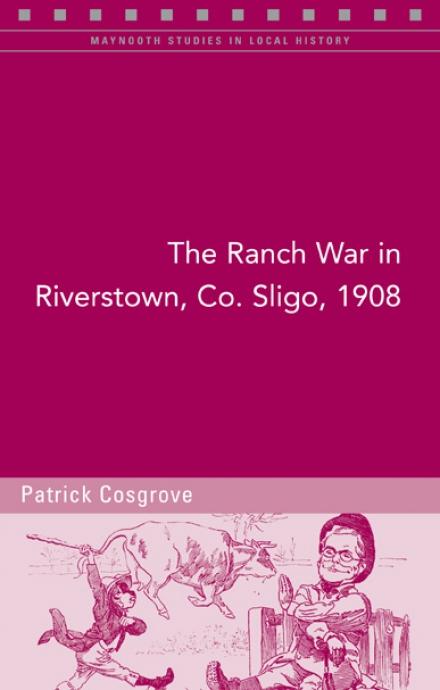
Patrick Cosgrove, The Ranch War in Riverstown, Co. Sligo, 1908
This book investigates how the anti-grazing agitation known as the Ranch War, 1906–9, operated at local level in Co. Sligo by focusing on the activities of the Riverstown United Irish League (UIL) branch. One of the most dramatic incidents of the agitation occurred in October 1908 when a young man named John Stenson was shot dead by the police at a cattle drive in Riverstown. At this time, the Riverstown UIL branch was operating a boycott of local Protestants (who refused to join or subscribe to the league) that led to a government prosecution known as the ‘Riverstown conspiracy’ case. Some of the major issues in Irish rural society during the period were played out at local level in Riverstown: the debate over law and order; the importation and distribution of guns; the tensions created in the nationalist movement by the Ranch War agitation; the emergence of a more extreme form of nationalism; unionist concerns over the fate of the loyal Protestant minority in the west of Ireland. While the various incidents at Riverstown may have been parochial in nature, they acquired national significance and, as this study reveals, attracted the attention of the leading politicians of the day.
Reviews
‘Cosgrove shows how the Riverstown conspiracy case, which saw the prosecution of prominent agitators, brought together not just discontent over ranching but the activities of the local United Irish League, simmering sectarian tensions and the role of the RIC in protecting the status quo. This Maynooth local studies publication is a good example of how a local case can tell us much about national events', Books Ireland (October 2012).
‘This type of research is of exceptional importance to the family historian who seeks a greater understanding of the conditions and events that impacted on the lives of our ancestors and their communities', Michael Merrigan, Irish Lives Remembered (April 2013).
Published by Four Courts Press, https://www.fourcourtspress.ie/books/2012/the-ranch-war-in-riverstown-co-sligo-1908/
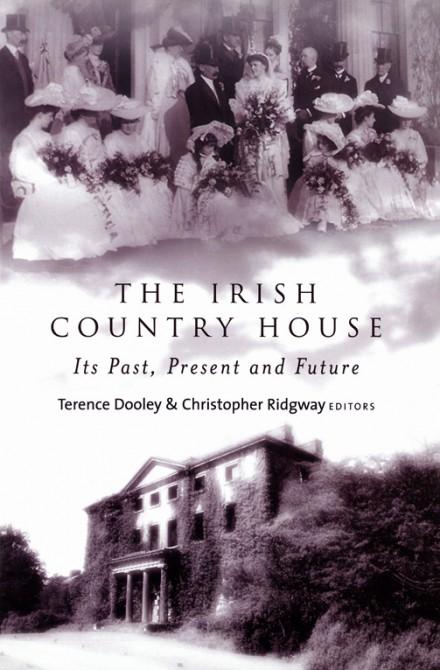
Terence Dooley & Christopher Ridgway (editors), The Irish country house: its past, present and future (2011)
This volume of essays emanates from the highly successful Historic Houses of Ireland Conference held at NUI Maynooth each year since 2003. Edited by: Terence Dooley, Director of the Centre for the Study of Historic Irish Houses and Estates at NUI Maynooth, and Christopher Ridgway, Curator of Castle Howard in Yorkshire, UK.
Contents:
- R.V. Comerford: Foreword
- Patrick Walsh: William Conolly and Castletown
- Finola O’Kane: The making of Mount Merrion, Co. Dublin
- Judith Hill: The uses of the past in Adare, Co. Limerick
- Patrick Cosgrove: Irish landlords and the Wyndham Land Act, 1903
- Ciarán J. Reilly: The burning of country houses in Co. Offaly during the revoloutionary period, 1920-3
- Olwen Purdue: Big house society in Northern Ireland, 1921–69
- Terence Dooley: Social life at Castle Hyde, 1931–88
- Karol Mullaney-Dignam: The Music in the Irish country house project
- Danielle O’Donovan & Jennifer McCrea: Education and the historic house
- Christopher Ridgway: Making and meaning in the country house
- Allen Warren: The Twilight of the ascendancy and the big house
Reviews
‘Interesting reading … we have come a long way in reimagining the country house’, Patricia McCarthy, Irish Arts Review (Autumn 2011).
‘Several broad themes are addressed within The Irish Country House, namely the construction and architectural styles of these buildings and their associated demesne landscapes; the demise of landlordism in the early part of the twentieth century; the fate of these houses in both the Republic and Northern Ireland; the role of music in the Irish country house and the use of “big” houses today as educational facilities and tourist attractions. The volume strikes a good balance between case study-focused chapters and those with a broader scope … From academics interested in accessing some of the latest research in the field of historic house, estate and demesne landscape studies, to those involved in the management and running of these houses as educational facilities and tourist attractions, to local and state authorities and the general public, this well illustrated, very readable book comes highly recommended’, Jonathan Cherry, Irish Literary Supplement (Fall 2011).
‘For some [country houses] were a symbol of oppression and decadence. Now they are simply a fascinating example of history brought to life … this book provides a long and intensely interesting argument for the preservation not only of a house itself but of its written records, its muniments. For these are the history of the place, of the estate, of the village or town, of the townland, of its farms and holdings … in other chapters there is a disturbing examination of our most vicious expression of animosity, that triumph of reprisal and sometimes undisguised greed, which for years made Ireland resemble the Zimbabwe we learn of today with cattle drives, stolen stock, and the sometimes brutal destruction of thriving farms … The Irish Country House: its past, present and future celebrates above all the ability of such places to transform themselves, time after time’, Mary Leland, Irish Examiner (July 2011).
‘This collection of essays on the history of Irish country houses showcases scholarship in a variety of areas relating to the cultural history of this important facet of colonial and elite society life … Individual articles include tables, period photographs and illustrations. Contributors include historians from a variety of Irish universities’, Reference & Research Book News (August 2011).
Published by Four Courts Press, https://www.fourcourtspress.ie/books/2015/the-irish-country-house/
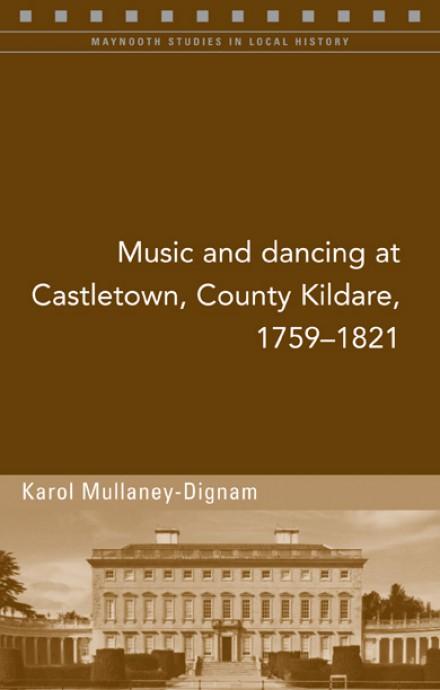
Karol Mullaney-Dignam, Music and dancing at Castletown, Co. Kildare, 1759-1821
Castletown, near Celbridge in Co. Kildare, was the home of the Right Honourable Thomas Conolly and his wife Lady Louisa Augusta (née Lennox). As a well-connected, high-society couple, the Conollys received invitations to the most exclusive social events in Dublin and London and were closely associated with formal social life at Dublin Castle. By the 1780s, their magnificent residence was a centre of fashionable sociability in which music and dancing were significant agents. This study outlines the types of music and dancing which occurred at Castletown in the period from 1759 to 1821. It points to the influences of the Conolly’s social milieu and the entertainments which they experienced at non-domiciliary venues such as assembly rooms and theatres. It also shows how music and dancing functioned in terms of social education: prominent music- and dancing-masters were employed and musical instruments purchased for members of the extended Conolly family. This scholarly examination of music and dancing, as aspects of domiciliary sociability, entertainment and education, provides new perspectives on the form, function and furnishing of a Georgian country house in Ireland. It also provides a useful framework for investigating the lives of the various people who lived and worked therein.
Review
‘This study of music and dancing at Castletown House is a welcome addition to the Maynooth studies in local history series. Karol Mullaney-Dignam is to be congratulated on her scholarship in this endeavour … this is a detailed and well-researched study and it whets the appetite for information on activities such as these in other big house in Ireland', Patricia McCarthy, Eighteenth Century Ireland (2012).
Published by Four Courts Press, https://www.fourcourtspress.ie/books/archives/music-and-dancing-at-castletown-co-kildare-17591821/

Terence Dooley, The big houses and landed estates of Ireland: A research guide
This book is designed to provide historians and all those interested in local history, specifically the history of landed estates and Irish big houses, with practical advice regarding the availability of primary sources, their locations, their strengths and their limitations. It significantly expands on the Sources for the history of landed estates in Ireland published by the same author in 2000 by also taking into account the vast array of sources that are available for the study of big houses, other than estate papers, such as auction catalogues, photographs, oral archives and architectural drawings. This book also provides a very broad outline of the history of landed estates and big houses in Ireland from the sixteenth to the end of the twentieth century.
Reviews
‘Everyone who is interested in local history will be interested in The Big Houses and Landed Estates of Ireland, Terence Dooley’s research guide, which is packed with practical advice regarding the availability of primary sources, their locations, their strengths and their weaknesses', Arminta Wallace, Irish Times Weekend Review.
‘This Maynooth research guide sets out clearly where to find out about any particular big house, who has the records and archives, and which libraries and institutions to consult', Books Ireland.
'[Dooley's] latest book successfully expands his previous research guide to include material relating to the social, economic and art historical background to the big house itself …. Written in a matter-of-fact style, the book explains the background to the available historical records, outlining the purpose of the records that were kept, their state of preservation and their present whereabouts', Dr Andrew Tierney, Irish Arts Review.
‘Valuable not only to researchers, but to all who are interested in the history of rural Ireland’, DLC, Dublin Historical Record.
‘This book is a most useful source for any researcher interested in the history of landed estates in Ireland and the big houses that were a feature of most of these estates. Terence Dooley is a well known expert in this field, having written a number of books on the subject.’ Brigid Clesham, Journal of the Galway Archaeological and Historical Society (2008).
‘[This book], like those previously published as part of the Maynooth Research Guides for Irish Local History, provide invaluable detail and guidance to historical researchers about accessing, utilising and evaluating specific bodies of source material. The expertise of the authors of these guides in identifying and outlining in a succinct and insightful manner the content, usefulness and shortcomings of these important collections can come only from those with personal experience of using this material over a number of years … [this book is] very useful to the student new to this aspect of Irish history and to those who may wish to establish an interest in the topic … of prime importance here are the collections of estate records, compiled by the landlords and their employees … Terence Dooley has done much in establishing the study of the big house and landed estate firmly within contemporary Irish historical research and in advancing our understanding and appreciation of these important components of Ireland’s landscape and society … what emerges from these [Guides] is the enthusiasm and passion that each author has for the use of the respective bodies of source material they examine. The insights offered by each author into the potential of these sources are encouraging for researchers beginning their own studies. Both the historian of long years and those new to the discipline will glean a lot of pertinent information and guidance from these books and from this series of publications generally', Jonathan Cherry, Irish Economic and Social History (2009).
Published by Four Courts Press, https://www.fourcourtspress.ie/books/archives/the-big-houses-and-landed-estates-of-ireland/
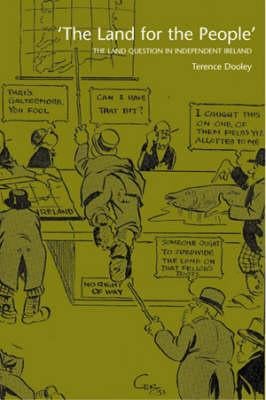
Terence Dooley, 'The Land for the People': the land question in independent Ireland (2004)
While the land question from the mid-Victorian period to the eve of the First World War plays a prominent role in Irish historiography, historians have tended to overlook its importance in post-independence Ireland and have generally assumed that there was no land question after 1922. Terence Dooley debunks this myth. In this first systematic analysis of the land question in independent Ireland, he contends that agrarian agitation proved to be an important stimulus to political revolution during the period 1917 to 1923. He assesses the dangers which agitation posed for the Provisional Government after 1922 and argues that the 1923 Land Act not only ended agrarian agitation but also made a major contribution to ending the Civil War. Dooley emphasises the significance of Irish Land Commission to Irish rural life in an extensive analysis of the working of the Land Commission after its reconstitution in 1923. The commission became the most important (and controversial) government body operating in independent Ireland. It acted as a facilitator of social engineering, compulsorily acquiring lands from traditional landlords, large farmers, graziers and negligent farmers and passing them on to smallholders, ex-employees of acquired estates, evicted tenants and their representatives, members of the pre-Truce IRA and the landless. It migrated over 14,500 farmers onto lands totalling almost 400,000 acres. The continued hunger for land and the impact of land acquisition and division on so many people ensured that the land reform question remained one of the most potent political issues until the early 1980s.
Published by : UCD Press, Dublin (July 2004) https://www.ucdpress.ie/display.asp?K=9781904558149
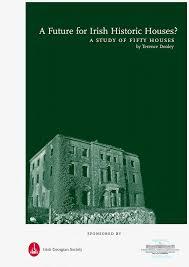
Terence Dooley, A future for Irish Historic Houses? - A study of fifty houses
Many studies over decades had highlighted the importance of historic properties both in terms of culture and contemporary economic benefit and in 2003 'A future for Irish Historic Houses?- A study of fifty houses' by Dr Terence Dooley played an important part in supporting the creation of the Trust.
Published by Irish Heritage Trust, https://www.irishheritagetrust.ie/about/our-story-so-far/
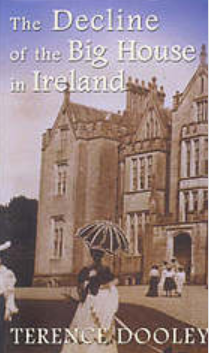
Terence Dooley, The Decline of the Big House in Ireland (2001)
Built to inspire awe and deference, the country homes of Irish landlords were traditionally referred to as 'big houses'. In post-Famine Ireland, these edifices stood as implacable symbols of the economic and social strength of the landed class who resided in them. Their mystique attracted both curiosity and contempt. However, in less than ten decades, the whole fabric of Irish landed society had been totally transformed by economic, social and political developments, and this seemingly indomitable bastion had begun to crumble.
As the demise of ascendancy life set in, houses and demesnes, once thronging with guests and busy with social events and hunting parties, became ghostly shells on the landscape; many were partially closed off, sold, burned or completely abandoned.
Drawing on big house and landed estate records and personal memoirs, Terence Dooley gives an insight into the lives of members of the privileged landed class, their efforts to retain their status and, ultimately, their inability to survive the socio-political upheaval of the late nineteenth and twentieth centuries. He also investigates how the few survivors hung on in spite of various assaults on their lifestyle - from the Land League to the War of Independence and the foundation of the Irish Free State.
Reviews
‘Terence Dooley has produced an excellent study of the decline of the Big House from 1860…. This is an impressive work.’’ [Dermot Bolger in Sunday Tribune].
‘This book reveals an author’s encyclopaedic knowledge of the hundreds of aristocratic families and their houses all over Ireland.
The decline of the big house flows along beautifully bringing together the economic, social and political issues that affected life in these privileged and extraordinary houses. Dooley’s book is a must read.’’ [Peter Pearson in Sunday Business Post].
'Terence Dooley’s book is a brilliant and penetrating study of the reasons why the Republic of Ireland has so few surviving historic houses and collections.’’ [Desmond FitzGerald, Knight of Glin in Country Life].
Published by Wolfhound Press, Dublin (April 2011).
Conferences
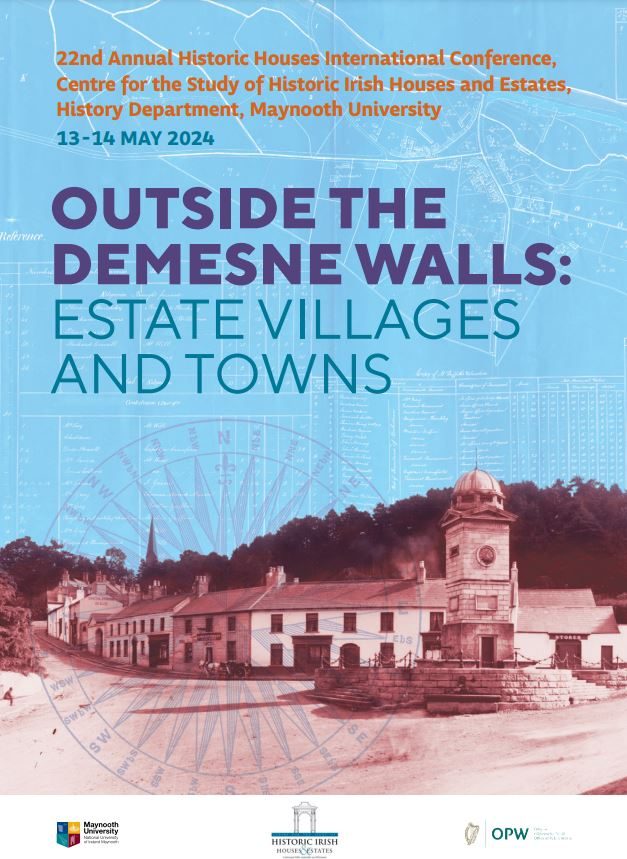



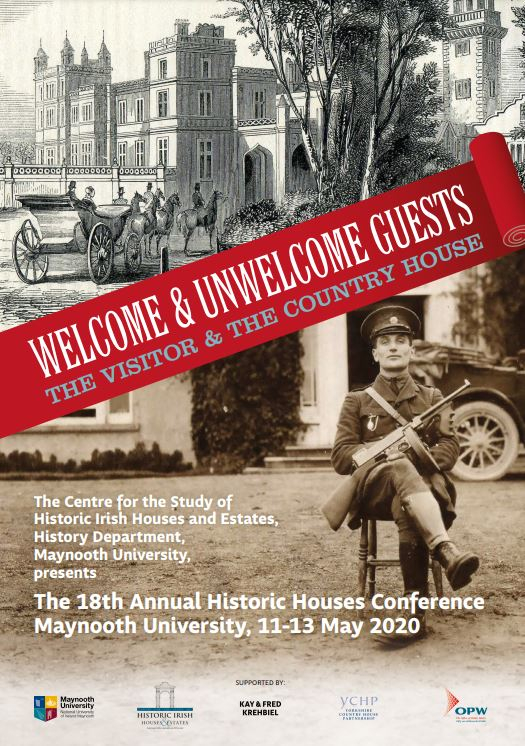
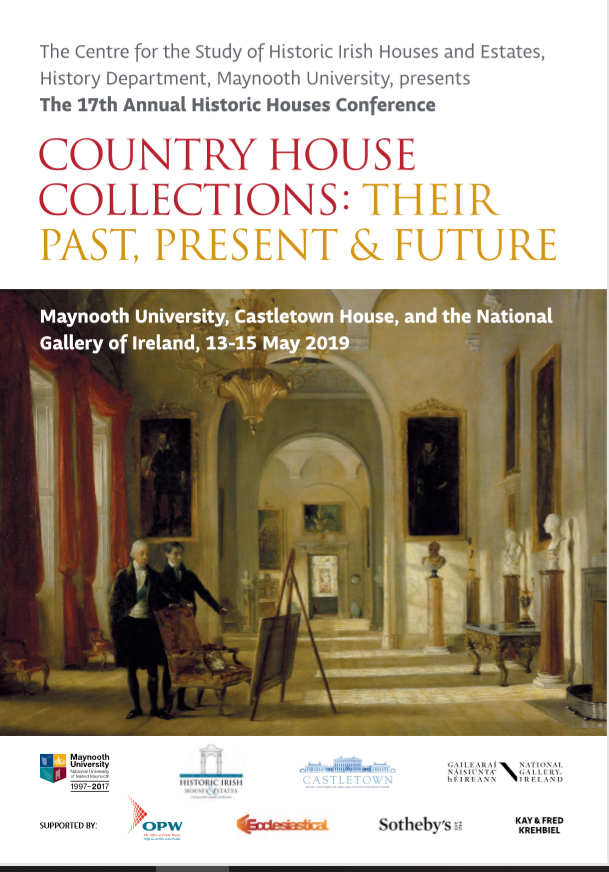
17th Annual Historic Houses of Ireland conference programme
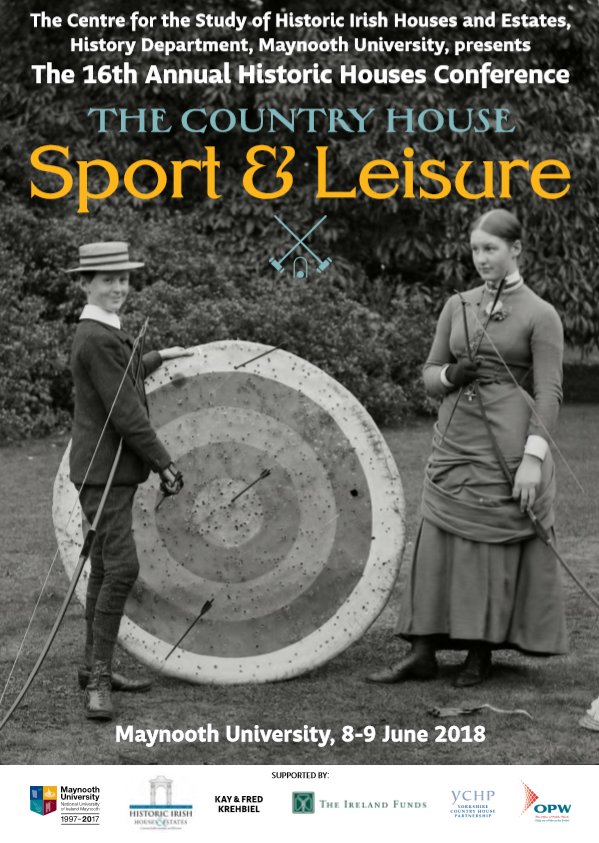
16th Annual Historic Houses of Ireland conference programme
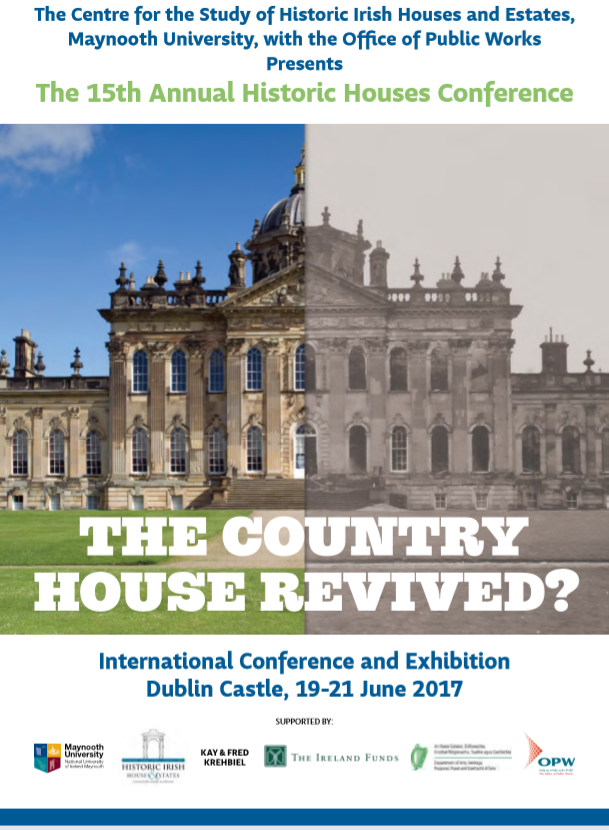
15th Annual Historic Houses of Ireland conference programme
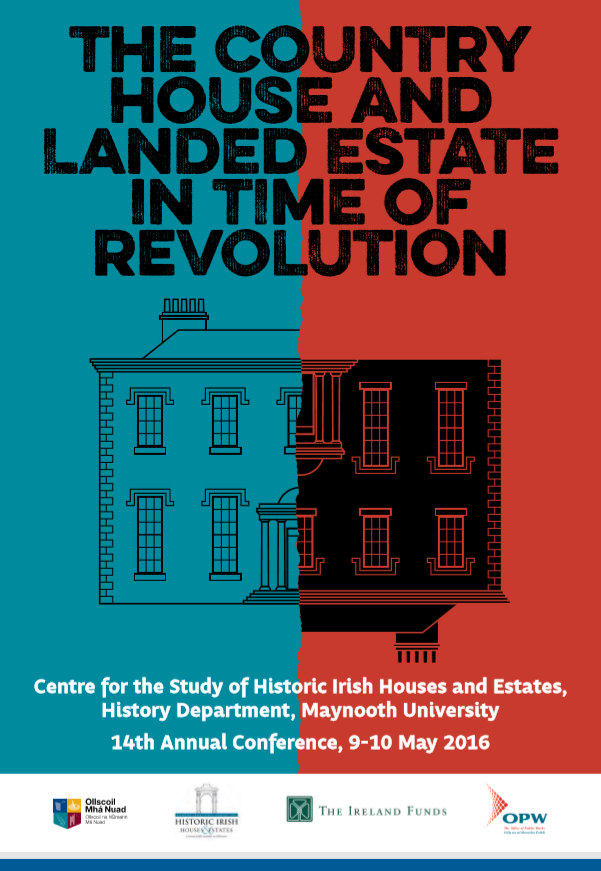
14th Annual Historic Houses of Ireland conference programme
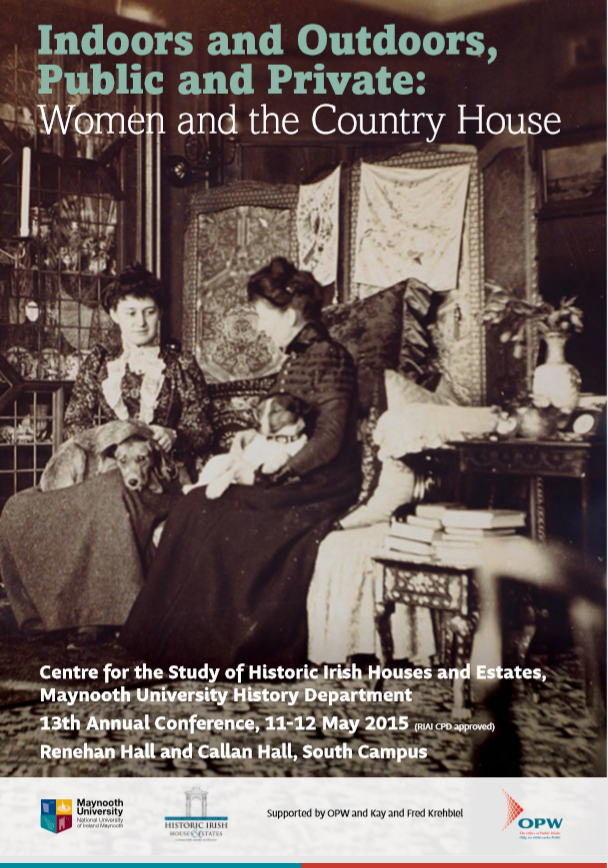
13th Annual Historic Houses of Ireland conference programme
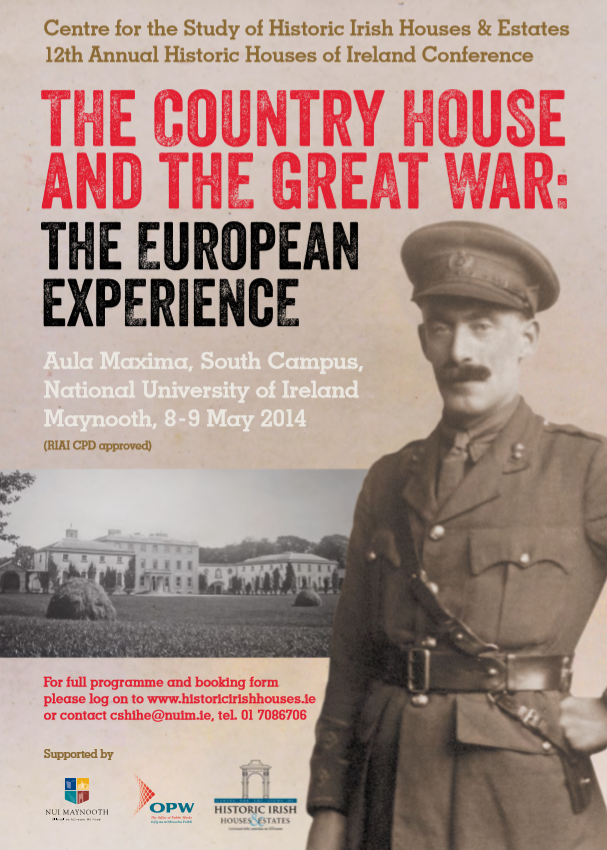
12th Annual Historic Houses of Ireland conference programme
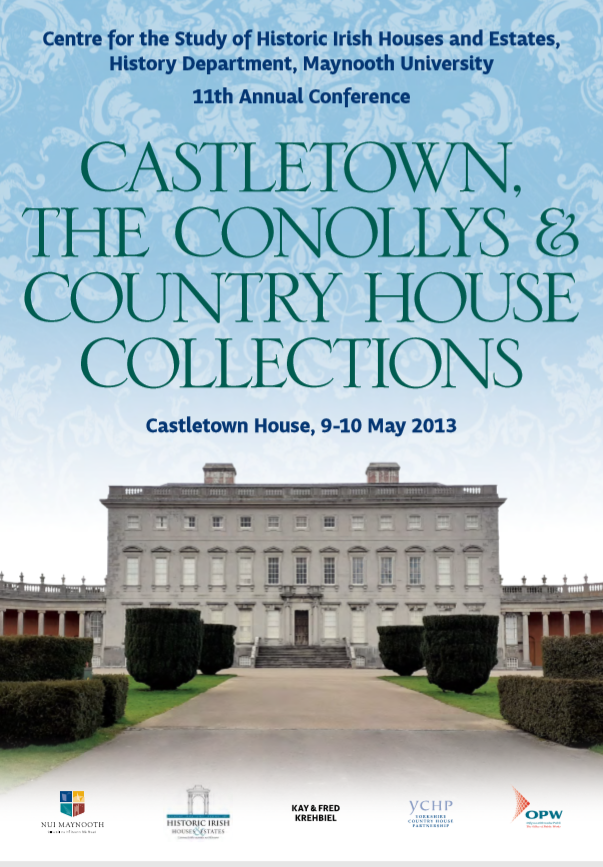
11th Annual Historic Houses of Ireland conference programme
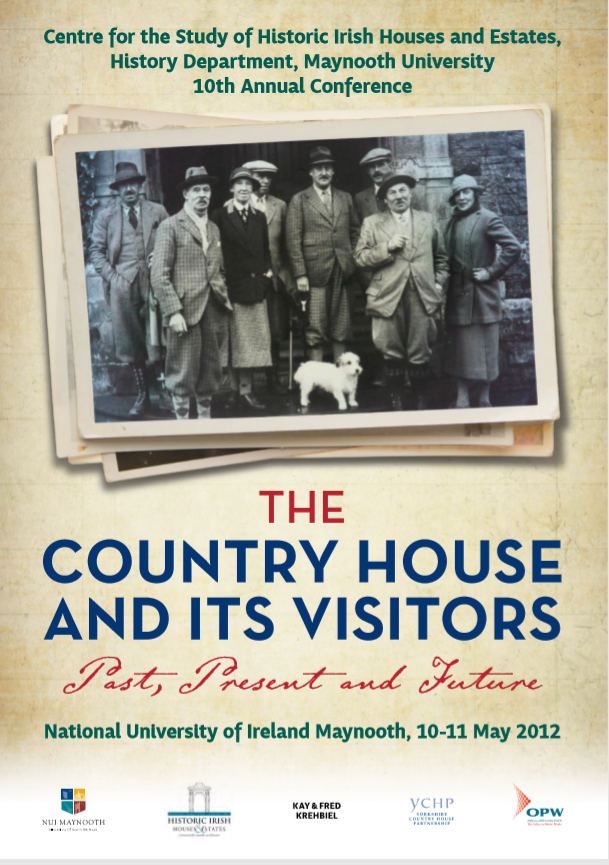
10th Annual Historic Houses of Ireland conference programme
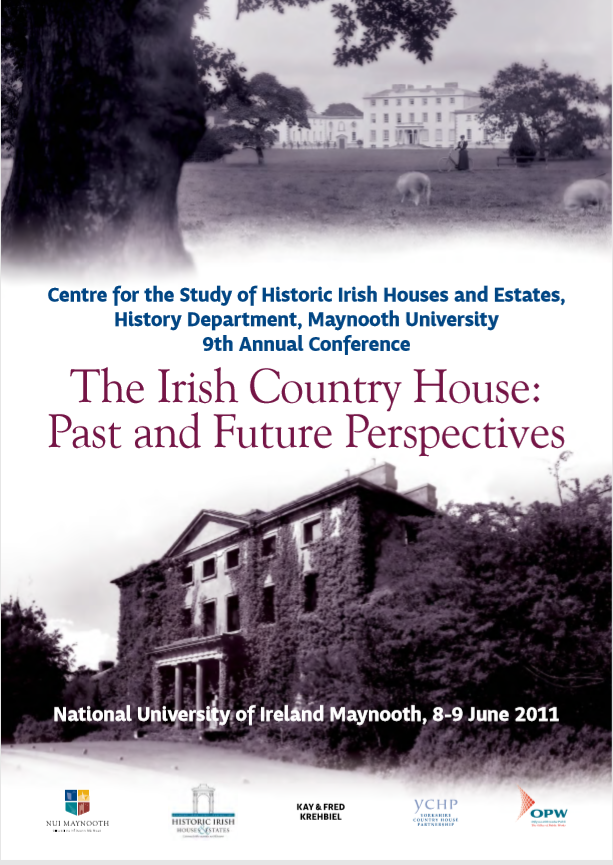
9th Annual Historic Houses of Ireland conference programme

8th Annual Historic Houses of Ireland conference programme
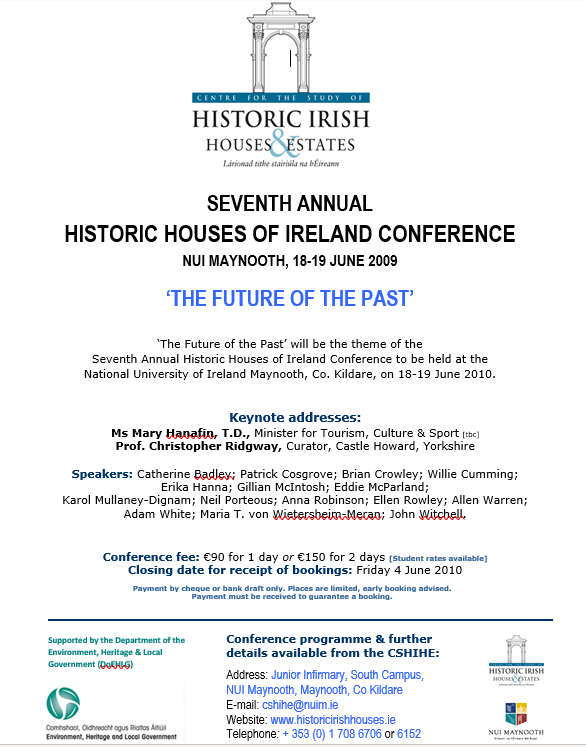
7th Annual Historic Houses of Ireland conference programme
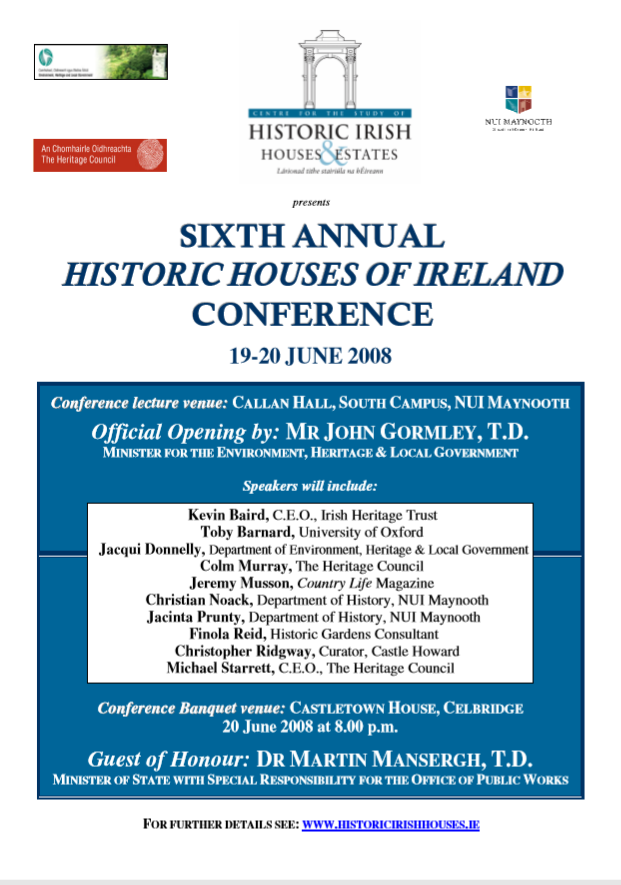
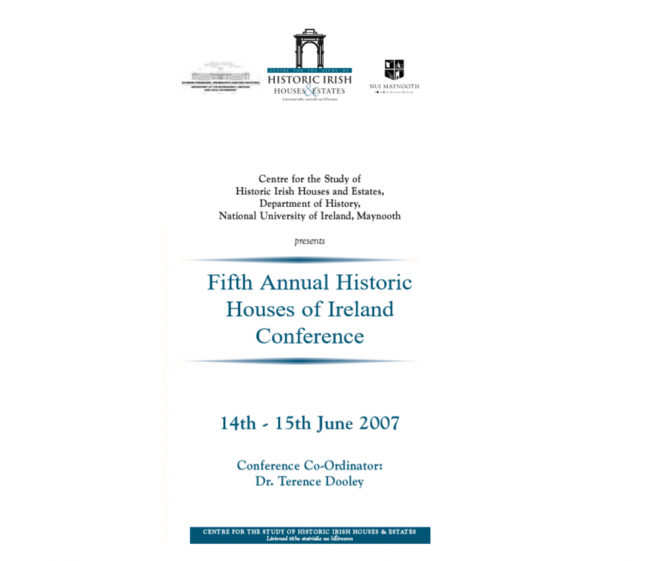


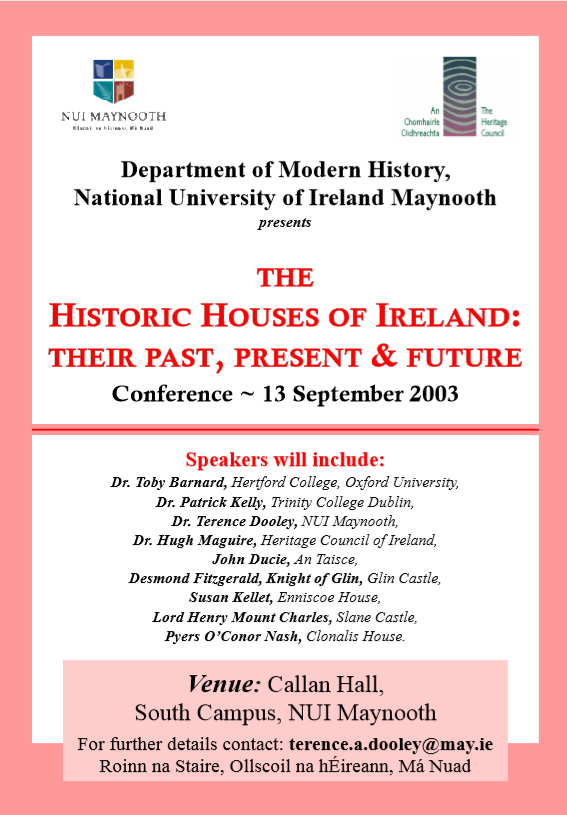
Projects
Morpeth Roll:
For an extended documentary on the Morpeth Roll see https://www.youtube.com/watch?v=IehD_HUQzxs
The Great Famine and the Landed Estate: Ciarán Reilly, Strokestown and the Great Irish Famine (Dublin, 2014).
Irish Landed Estates, Rentals and Maps project in collaboration with the National Library of Ireland: Report by Mel Farrell, https://www.nli.ie/en/irish-landed-estates-rentals-and-maps.aspx
Music and the Irish Country House Project with OPW: Karol Mullaney-Dignam, Music and dancing at Castletown, Co. Kildare, 1759–1821 (Dublin, 2011).
The Monksgrange Archive Project: Philip Bull, Monksgrange: Portrait of an Irish house and family, 1769–1969 (Dublin, 2019).
Report into Exercise Scoping Yorkshire-Irish Connections, 1660-1930:
Visiting Scholars

Prof. Philiip Bull
Email: [email protected]
Dr Philip Bull is Adjunct Professor, La Trobe University, Melbourne and Associate Research Fellow, Centre for the Study of Historic Irish Houses and Estates, Maynooth University. He served twice as Head of History at La Trobe University and between 2006 and 2009 was the director of the European Union Centre based at La Trobe. He is the author of Land, Politics and Nationalism: A study of the Irish land question (Gill & Macmillan, 1996) and Monksgrange: Portrait of an Irish house and family, 1769–1969 (Four Courts Press, 2019) and has published numerous articles and book chapters on 19th and 20th century Irish history. Between 1971 and 1974 he was employed as an archival assistant in the Department of Western Manuscripts at the Bodleian Library, Oxford. He is co-editor of the Australasian Journal of Irish Studies, co-convenor of the Melbourne Irish Studies Seminar series and was co-convenor of the 21st Australasian Irish Studies Conference at Maynooth University in June 2015. Since 2008 he has been organising and cataloguing the archive at Monksgrange in county Wexford and is in the process of completing a detailed catalogue of this manuscript collection. Based on his Monksgrange research, he has published five substantial book chapters and several entries for the Dictionary of Irish Biography.

